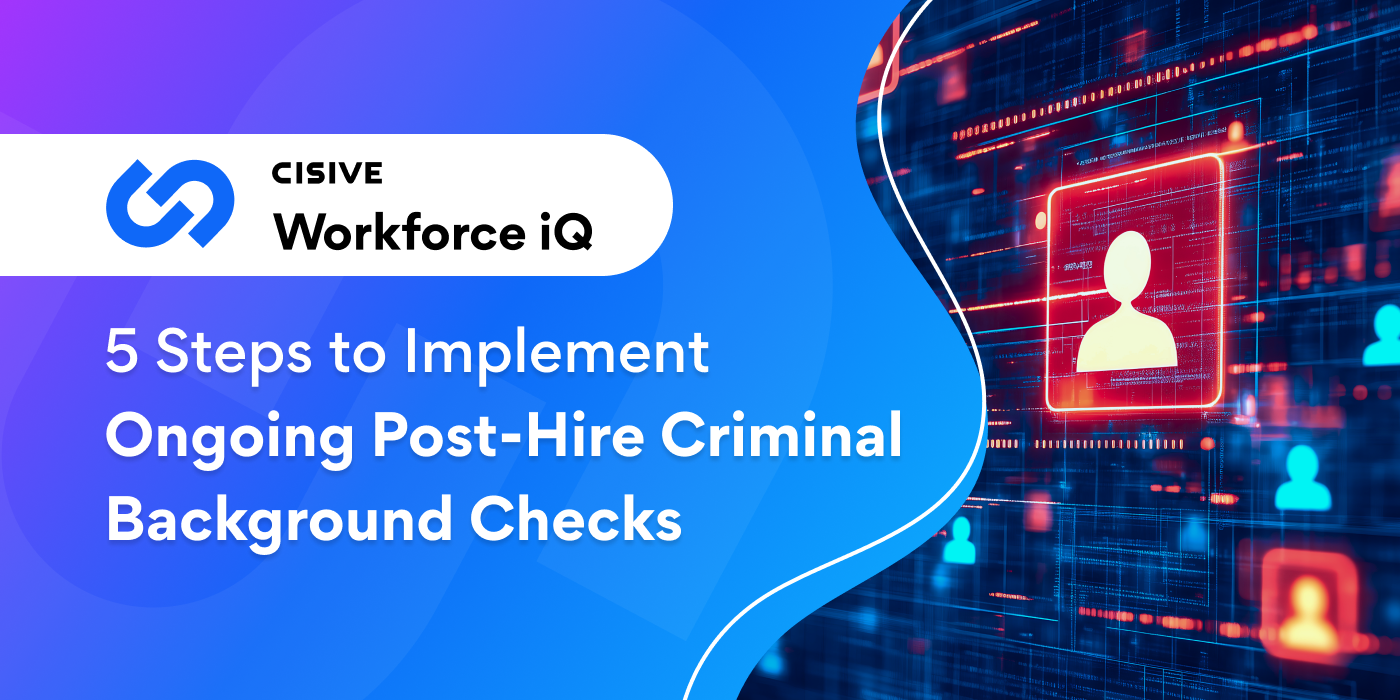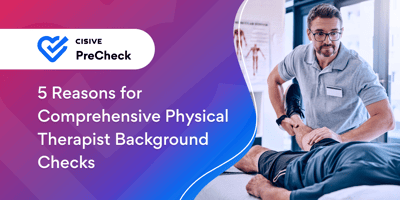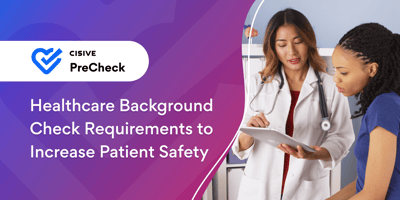

Do you trust the physical therapists you hire? They work directly with patients and need to deliver...

While traditional background checks are a necessary first step in hiring, they only offer a snapshot of an employee’s history at one moment in time. Continuous background screening bridges the gaps, delivering near real-time monitoring that ensures your workforce remains trustworthy and compliant.
Ongoing monitoring is gaining in popularity. In 2021, about 19% of organizations conducted post-hire background checks, according to survey data from the Professional Background Screening Association (PBSA). That’s up from 12% in 2020.
There's a good reason for that: Unlike traditional pre-employment screenings, continuous monitoring keeps you informed about updates to employees’ backgrounds long after they’re hired. “Continuous criminal monitoring is a real time ongoing monitoring,” says Christine Law, Product Manager at Cisive. “So if I am convicted of a crime tomorrow, it is going to show up. If I am convicted of something a month from now, it's going to show up. So it's continuously knowing my history as opposed to only looking back.”
Learn more about continuous background checks, from their benefits to practical steps for implementing continuous monitoring in your organization.
Continuous background screening is a proactive approach to identify potential risks to protect your business from negative impacts. Instead of relying on periodic re-checks or updates triggered by major events, continuous monitoring provides real-time updates on criminal records.
For example, if a current employee is convicted of a crime today, that information is available almost immediately through continuous monitoring. By contrast, a traditional screening program would only uncover this during a scheduled re-check — or not at all if ongoing checks aren’t in place.
Including a near real-time monitoring program also resolves inefficiencies in the background checking process. When monitoring solutions rely on arrest records, employers are left with information that can be unreliable and time-consuming to verify. Continuous monitoring leverages court record data to provide faster, more actionable results — a game-changer for organizations prioritizing speed and accuracy.

Every organization strives to ensure safety, compliance, and trust. Here’s how continuous background checks deliver on these goals.
A robust background check program, including continuous monitoring, is essential to uncover and address risks that could compromise workplace safety and employee trust. “What happens when your co-worker has been convicted of assault and now you're in the office every day and they're right there? That is risk,” Christine says. By implementing a screening program with continuous monitoring, you can proactively address these risks.
Regulations such as the Fair Credit Reporting Act (FCRA) demand accurate, actionable background data. Continuous monitoring ensures ongoing compliance, reducing exposure to liability and ensuring your business meets industry standards.
Safety campaigns are integral to industries like healthcare and transportation. Continuous monitoring identifies potential threats, ensuring both employee-to-employee and employee-to-customer risks are mitigated. For instance, ongoing background checks could flag a healthcare worker convicted of a violent crime so their employer can take action before putting patients or employees at risk.
A post-hire screening process that includes real-time updates allows you to maintain a reliable and high-performing workforce. It also enhances decision-making when promoting or reassigning employees, ensuring no surprises disrupt operations.

Adopting continuous background screening processes requires thoughtful planning and execution. Explore some of the steps you can take to get started.
Begin by defining the purpose and scope of your continuous screening program. Determine what types of information will be monitored and how results will be used. Ensure your background check policy aligns with industry standards and legal requirements.
Compliance with the FCRA and similar regulations mandates documented employee consent. Work with your legal team to draft clear consent forms authorizing ongoing monitoring.
Partner with a reliable screening company, like Cisive, that offers robust tools to manage the background check process. Look for providers that prioritize security, accuracy, and speed while maintaining compliance with laws and regulations. Seek out partners who are accredited by the Professional Background Screening Association (PBSA).
Once your system is in place, it will continuously analyze data from your employee roster. For Cisive clients, the process is as simple as uploading a roster into the system, Christine says. From there, monitoring continues until the employee is removed from the roster. Alerts will notify designated HR personnel of any flagged results, enabling swift action.
Build trust by communicating how continuous monitoring benefits employees and protects the workplace. A culture of safety and openness fosters better adoption and reduces resistance.
The future of continuous background screening lies in technology. Advancements like increased access to online court records and automation tools are making the process faster and more reliable. However, challenges such as inconsistencies in local court systems still persist.
Organizations like Cisive remain at the forefront of innovation, ensuring employers can access the most accurate data possible. As more courts digitize their records, expect even greater efficiencies in risk management.
Continuous background screening isn’t just a tool for compliance — it’s a strategy for mitigating risks, protecting workplace safety, and enhancing trust in your workforce. By embracing real-time monitoring and partnering with experts in the field, your organization can stay ahead of potential threats while maintaining a strong, secure workplace.
Are you ready to make continuous monitoring a part of your risk mitigation strategy? Learn more about Cisive’s solutions and schedule a consultation today.
Author: Jenni Gallaway
Bio: Content Marketing Manager at Cisive. 8 years of experience in the background screening industry.
Let's Connect on LinkedIn
Do you trust the physical therapists you hire? They work directly with patients and need to deliver...

It's important to understand and comply with your state's healthcare background check requirements....

While employers are evaluating background screening services or making policy decisions about...